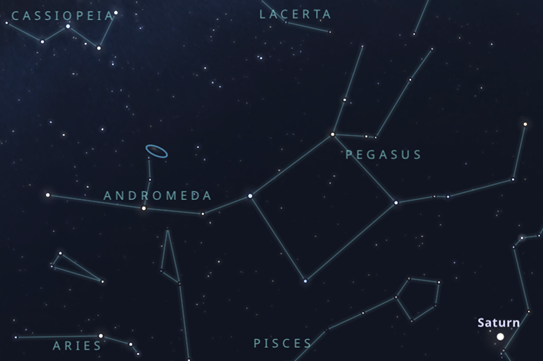What's Up? - Ohio Skylights September 2024

Constellations, Planets, and Astronomical Events Visible in September 2024
Happy September! I’ll be the new writer for Ohio SkyLites, so I look forward to keeping everyone up to date on what’s up in our night sky!
Since it’s September, that means Autumn is just around the corner. The autumnal equinox will occur on September 22nd, signifying the start of the fall season. Being an equinox, the duration of the day and night will be about the same. This happens because the Earth’s rotational axis is tilted about 23.5 degrees compared to its orbital axis around the Sun. As we move through the autumn, you’ll see the days get shorter and shorter until we reach the winter solstice, which I’ll talk more about once December rolls around.

September will also be a great opportunity to observe some of the planets in our solar system! On September 5th, Mercury will be at its greatest western elongation, which means it’ll be at the furthest point from the Sun in the sky, making it the best time to view. To see Mercury, you’ll want to get up early in the morning just before sunrise and look close to the horizon in the east. Venus will be difficult to see this month since it is fairly close to the Sun, but if you want to try you can find it trailing behind the Sun just after sunset in the west. On a better note, Mars will be rising around 1:00 a.m. throughout the month, so it’ll be visible through the latter part of the night.
Jupiter will be rising about an hour earlier than Mars, making this month a good time to observe it if you like to stay up late. Being the two largest planets in our solar system Jupiter and Saturn are always bright, but this month, Saturn will be extra bright. On September 8th you’ll be able to observe Saturn in opposition, meaning Earth is right between Saturn and the Sun, making it brighter than normal. This also means Saturn rises as the Sun sets, making it visible all night long.

Uranus and Neptune are both unable to be seen with the naked eye, but if you have a telescope, you may be able to see them. Uranus will rise shortly before Jupiter, and Neptune will rise just after Saturn. Just like Saturn, Neptune is also in opposition this month, making this the best time to view it. Unfortunately, it will still only appear as a little blue dot even with a telescope.
The Moon will enter its new moon phase on September 3rd, which means it will be on the day side of the Earth. This will make for some great star gazing since the extra light the Moon reflects won’t be around the night sky. This month’s full moon phase on September 18th is special because the Moon will be at its closest approach to the Earth, also known as a supermoon. Since the Moon is closer, it will appear larger and brighter in the sky. This is the first of three supermoons this year.
A fun constellation to find in the Autumn is Pegasus. Named after the winged horse in Greek mythology, you can find Pegasus just above the eastern horizon after sunset, and it’ll rise higher in the sky throughout the night. I enjoy this constellation in particular because of how large it is on the sky, being the 7th largest constellation. Additionally, one of its main features is the roughly square shape marking the body of Pegasus.

Sources:
- http://www.seasky.org/astronomy/astronomy-calendar-2024.html
- https://stellarium-web.org/
- https://en.wikipedia.org/wiki/Pegasus_(constellation)
Image Credit:
- Earth Orbit Diagram: https://www.weather.gov/cle/Seasons
- Saturn at Opposition: https://science.nasa.gov/resource/saturn-at-opposition-2/
- Pegasus Constellation: https://stellarium-web.org/
